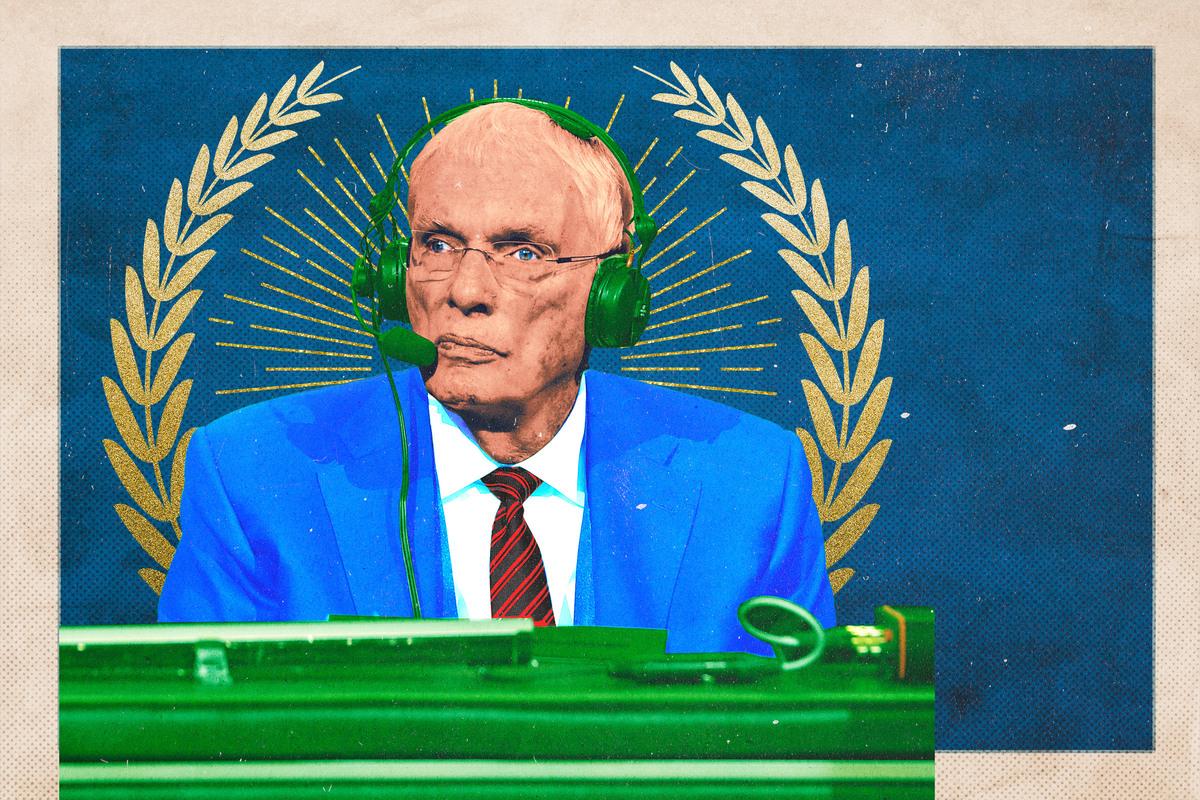
In the second offensive possession of his first playoff game, Evan Mobley, the Cleveland Cavaliers’ talented yet mild-mannered second-year big man, caught the ball near the free throw line and immediately attacked New York Knicks center Mitchell Robinson at the basket. A floater over Robinson’s outstretched arms missed, but Mobley managed to corral his own rebound, spin 360 degrees, and power a dunk past the big shot blocker. It was a thrilling series of moves in an otherwise lackluster postseason debut for the 21-year-old, the kind of play that elicits a barrage of tweets with heavy amounts of punctuation. But there was just as much of a reaction to the reaction of Hubie Brown, the 89-year-old color commentator.
“Oh, baby,” Brown beamed on the ESPN broadcast. “Whoa! Whoa!”
A few days later, I asked Brown about seeing the play live, and he broke down his recollection as if it were a pick-and-roll.
“Well, you’re evaluating what’s happening,” he said by phone, “and this was something physically out of the ordinary. You don’t see a 7-foot guy that quickly make a spin, move up over the top of a 7-foot guy, and almost jam the ball and the player into the basket.”
Brown is in his sixth decade in the NBA. He started his pro career in the 1972-73 season as the lone assistant coach for a Milwaukee Bucks team headlined by Oscar Robertson and a 20-something Kareem Abdul-Jabbar before moving on to head positions for the Kentucky Colonels (ABA), Atlanta Hawks, and New York Knicks. After moonlighting in the broadcast booth in between gigs, he became an analyst full time in the late ’80s, leaving only for a brief (but memorable) stint with the Memphis Grizzlies in the early 2000s. He scaled back his TV workload with ESPN this year to 15 regular-season games and a handful of playoff matchups, but the gravitational pull of the painted area remains as strong as ever.
“The game,” he said, “I don’t want to say it was my whole life, but my adult life.”
In the ever-churning world of sports broadcasting, Brown is your favorite teacher. His joy for the sport—and a well-executed play, in particular—is honest and unmistakable. He always seems to have a stat at the ready, but his analysis is more of a guided tour, especially in comparison to the jargony master classes offered by internet film grinders. When he punctuates his cadence with rhetorical questions—OK? You see? All right?—it feels like he’s checking to make sure you’re understanding the lesson plan.
Brown won Coach of the Year twice, 26 years apart, and may be one of the few people alive to have firsthand experience with every player involved in any barroom debate, but he doesn’t waste time comparing eras. To him, a broadcast is like a basketball game, right down to the tempo. So if the audience is responding to a less physical, more spread-out style of play, it’s his job, as coach of the play-by-play team, to adjust. “I think that I’m responsible for the nuances,” he said. “And how do you get the nuances? By preparing.”
Brown is renowned for his preparation. In addition to tracking coaching adjustments and attending the typical pregame production meetings and interviews, he consults files that he keeps on all 30 teams, which are filled with stats and notes from past broadcasts, some dating back years. After he walked through the ins and outs of his process, I asked Brown if he is as detail-oriented in other aspects of his life, and he went silent for two, maybe three seconds. “I’m smiling,” he said, “because I’m looking at my pad right now, my big 8-by-12 pad, and all of the things that I had to do today are all written down.”
Prep work was also the first thing that came to mind when Brown discussed what’s motivating him to still be a part of the broadcast this late in his career. “This stimulates you,” he said. “Stimulates your brain.” He doesn’t golf. Instead, he stays sharp by studying dribble handoffs and drop coverages. “People say, ‘You’re 89 years old.’ Well, I don’t get up in the morning and think, ‘I’m 89 years old,’ OK?”
But color commentary is obviously more than a mental exercise. He feels a responsibility to teach the game—and, of course, to successfully execute the presentation. “If we had one glitch, that’s one glitch too much,” he said. “If we were doubtful or we didn’t have good presentation, that should bother you, OK? It bothers me, all right?”
The coach who is said to have “waged warfare” on his front offices now thinks about the doors basketball has opened in his life, all the way back to the “little high school” he coached at in Little Falls, New York. He thinks about the fans he’s coached at clinics across the world and gets emotional when he thinks about the “buy-in” he got from his wife to change neighborhoods and churches with every new job.
“The journey has been exciting,” he said. “I can’t say it enough: You never underestimate the opportunity.”
Basketball is Brown’s passion, but it has also been his purpose. Even after 50 years in the booth or on the bench, the sidelines still provide a sense of belonging.
“It’s special when you sit at the table and you’re almost ready to go on, and the teams come out, and guys that were around the league a long time when you were coaching or not, coaches come by the table and say hello. Referees, different guys will come over. The old-timers say hello. It’s neat,” he said. “I don’t know what a vibe is, but you just feel that you’re still part of it. And you wouldn’t want to be anyplace else.”

